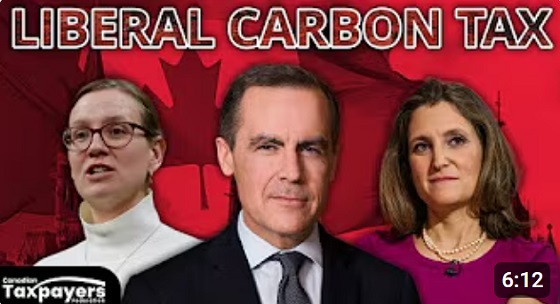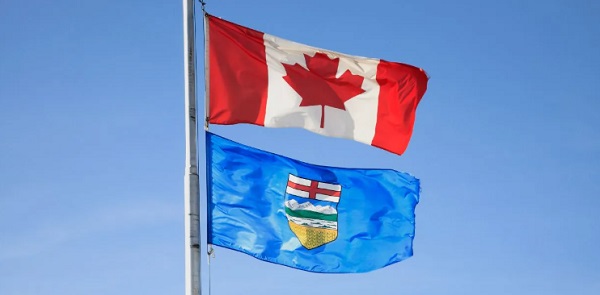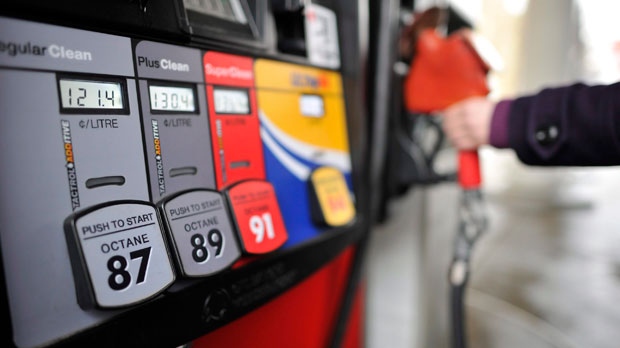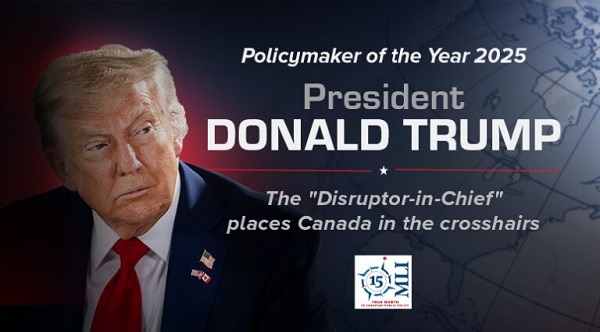Carbon Tax
Carbon tax tripping up Liberal leadership hopefuls

The Liberals and progressives everywhere were so close. At the height of their influence, no one, certainly anywhere in the English speaking world could make this claim: “Climate change IS NOT an existential threat to planet earth.” Those who did were immediately sidelined, ostracized by their cohorts, dismissed by corporate media and social media behemoths. Sure the battle still rages, but only in their information world where you still see phrases like “climate change denialist”.
You see their information world has not yet realized something new has happened. History writers will say Elon Musk stopped the progressives in their tracks by buying Twitter, releasing the Twitter files and eventually with Donald Trump, swinging the information world in the direction of X. If you have doubts just look at this picture. While the Twitter files reveal the new information world was under the, let’s say ‘secret influence’ of the White House, this photo shows those same tech power brokers are publicly, and happily celebrating the man they worked secretly to bring down. Or at least they’re not ashamed to publicly text their friends about it. The fact they’re not hiding probably reveals their eager support.

Sometimes we find it’s the people we look down our noses at who make all the difference. Like those overweight beer-guzzling hunter types who wear the red hats. (No not the Roman Cardinals, but the Appalachian trailer house occupants). These conspiracy theorists started to proclaim that the world would in fact not burn up by next weekend. Sure many of these seemed to be the same people who claim the world is flat and their neighbor is from another planet. But then more people stepped forward. Not about ‘pancake Earth’, but about the existential threat of climate change.
Family members and friends scorned and ridiculed them, and many still do. They were outraged that a regular citizen would dare to share information from a completely sane climate scientist or researcher who did not agree with the majority. They’d lose their marbles on those silly enough to cite a peer reviewed scientific paper. IF anyone was bold enough to take the time to read an entire report from NASA or Environment Canada, well you’d certainly hear someone say “You fool! You can’t do your own research!! You’re not a scientist!!”
Fortunately, funny man podcaster Jimmy Dore has the perfect comeback for these situations. Dore says when his own friends warned him only a Conspiracy Theorist would do his own research, he replied “You know before COVID doing your own research used to be called… reading”. It’s really worth two minutes to check this out. If you don’t find it funny, really funny, then I’m sorry. One day you will.
Jimmy Dore on the shaming of doing your own research and questioning the narrative during the Covid era…pic.twitter.com/PxCRVgklbj
— James Melville 🚜 (@JamesMelville) January 2, 2024
Speaking of reading, in the days before the printing press the Church and various wildly wealthy monarchs had a stranglehold on information sharing. Those who contradicted the party line could have their heads chopped off by a guillotine bought and paid for with their meagre tax offerings, or, they could expect to be publicly shamed and eternally condemned by their local preacher. Sure some of them probably deserved it but who am I to judge?
Then the printing press was invented. At first the Church leaders said, “Great now everyone can be educated, learn to read and even write themselves, and study the Bible on their own!” Eventually some of those same leaders said, “THIS IS A DISASTER! Everyone can be educated, learn to read and even write themselves, and study the Bible on their own!” After a few centuries the power structures in Europe completely changed. The Church divided into thousands of Protestant movements and the Catholic Church forever lost the political clout it never should have appreciated. Universities sprung up around libraries. Monarchs handed over power to early democratic governments. Books about science lead to scientific innovations. Average Joe’s eventually moved from underground mud huts to middle class condos in the sky.
Well the same thing is happening now with the internet. Except at breakneck speed. What took the printing press hundreds of years to accomplish, takes the internet a few months. The emergence and re-emergence of Trump Presidencies, revolutions against power structures, could not have been accomplished without the way we get information on the internet.
Sure there’s a lot of murky confusion as corporate media used to their powerful podiums of the printing press and cable tv are moving their content over to the new medium. But they’re being (sorry it’s all over, they have been) overtaken by the new form of information sharing. We’ve gone from headlines and ten second sound bites, to three hour long conversations with plenty of time for explaining and context. That’s something cable tv just didn’t have enough bandwidth to deliver.
So what does this mean for people trying to buy 1,200 square foot condos in Canada today?
Well we get to watch the power brokers struggle to retain their grip on / over our lives.
Those running to replace the son of … Hmm. Here’s a perfect example. Depending upon where you get your information from he’s either the son of Pierre, or he has an incomprehensively uncanny and impossibly accidental resemblance to a close personal family friend.
Those running to replace Liberal Leader Justin (let’s leave the last name out until the DNA results are back) definitely believe his father is Pierre. They believe Russians are our enemies. They think COVID vaccines saved the world. They think NATO is protecting Ukraine. And they certainly believe if we pay higher taxes in Canada we’ll save the world from the temperatures many of us pay thousands of dollars to escape to for a few days for six months of the year.
Carney, Gould, and Freeland don’t seem to realize everyday Canadians are simply done with the idea that a Carbon Tax in any form is going to save the world. Thanks to the internet, regular folks/voters have had time to do a little reading and listen to a few long conversations about this. Average people are understanding that CO2 makes up not 40% or 60% of the atmosphere, but .04%. Of that .04%, less than 4% is caused by humans. Mathematically it’s silly to think that paying more for food and groceries and everything else in Rosetown, Saskatchewan or Red Deer, Alberta is going to stop, slow down, or make any difference at all to global temperatures in 20 years.
It’s ironic that it’s the modern progressive movement who are stuck in the old information age. You’d think the slower thinking conservatives would hold on to the old ways and they’d be the ones trying to enforce restrictions on the new communication movement. Somehow the self proclaimed forward looking progressives are the ones trying to censor. Maybe it does make sense. Conservatives are more likely to read their history. They know the ones who censor are always trying to retain their failing grasp on power. New information consumers are ready, willing, and annoyingly attempting to debate. But there’s no debate for those who say “The science is settled.” I guess that means they’re all finished learning things.
Sorry to the Liberal Leadership hopefuls. They haven’t heard the news. Well actually they have and that’s the problem. Instead of paying attention to what’s really happening, they’re dismissing everything and everyone who doesn’t appear on the cable news channels.. other than to be ridiculed that is.
I leave you with this short video from Franco Terrazzano of the Canadian Taxpayers Federation. Franco explains how those vying for control of the PMO are tripping over their new versions of an old and failed Carbon Tax. Pity them. They don’t realize voters have moved on.
Alberta
Carney forces Alberta to pay a steep price for the West Coast Pipeline MOU

From the Fraser Institute
The stiffer carbon tax will make Alberta’s oil sector more expensive and thus less competitive at a time when many analysts expect a surge in oil production. The costs of mandated carbon capture will similarly increase costs in the oilsands and make the province less cost competitive.
As we enter the final days of 2025, a “deal” has been struck between Carney government and the Alberta government over the province’s ability to produce and interprovincially transport its massive oil reserves (the world’s 4th-largest). The agreement is a step forward and likely a net positive for Alberta and its citizens. However, it’s not a second- or even third-best option, but rather a fourth-best option.
The agreement is deeply rooted in the development of a particular technology—the Pathways carbon capture, utilization and storage (CCUS) project, in exchange for relief from the counterproductive regulations and rules put in place by the Trudeau government. That relief, however, is attached to a requirement that Alberta commit to significant spending and support for Ottawa’s activist industrial policies. Also, on the critical issue of a new pipeline from Alberta to British Columbia’s coast, there are commitments but nothing approaching a guarantee.
Specifically, the agreement—or Memorandum of Understanding (MOU)—between the two parties gives Alberta exemptions from certain federal environmental laws and offers the prospect of a potential pathway to a new oil pipeline to the B.C. coast. The federal cap on greenhouse gas (GHG) emissions from the oil and gas sector will not be instituted; Alberta will be exempt from the federal “Clean Electricity Regulations”; a path to a million-barrel-per day pipeline to the BC coast for export to Asia will be facilitated and established as a priority of both governments, and the B.C. tanker ban may be adjusted to allow for limited oil transportation. Alberta’s energy sector will also likely gain some relief from the “greenwashing” speech controls emplaced by the Trudeau government.
In exchange, Alberta has agreed to implement a stricter (higher) industrial carbon-pricing regime; contribute to new infrastructure for electricity transmission to both B.C. and Saskatchewan; support through tax measures the building of a massive “sovereign” data centre; significantly increase collaboration and profit-sharing with Alberta’s Indigenous peoples; and support the massive multibillion-dollar Pathways project. Underpinning the entire MOU is an explicit agreement by Alberta with the federal government’s “net-zero 2050” GHG emissions agenda.
The MOU is probably good for Alberta and Canada’s oil industry. However, Alberta’s oil sector will be required to go to significantly greater—and much more expensive—lengths than it has in the past to meet the MOU’s conditions so Ottawa supports a west coast pipeline.
The stiffer carbon tax will make Alberta’s oil sector more expensive and thus less competitive at a time when many analysts expect a surge in oil production. The costs of mandated carbon capture will similarly increase costs in the oilsands and make the province less cost competitive. There’s additional complexity with respect to carbon capture since it’s very feasibility at the scale and time-frame stipulated in the MOU is questionable, as the historical experience with carbon capture, utilization and storage for storing GHG gases sustainably has not been promising.
These additional costs and requirements are why the agreement is the not the best possible solution. The ideal would have been for the federal government to genuinely review existing laws and regulations on a cost-benefit basis to help achieve its goal to become an “energy superpower.” If that had been done, the government would have eliminated a host of Trudeau-era regulations and laws, or at least massively overhauled them.
Instead, the Carney government, and now with the Alberta government, has chosen workarounds and special exemptions to the laws and regulations that still apply to everyone else.
Again, it’s very likely the MOU will benefit Alberta and the rest of the country economically. It’s no panacea, however, and will leave Alberta’s oil sector (and Alberta energy consumers) on the hook to pay more for the right to move its export products across Canada to reach other non-U.S. markets. It also forces Alberta to align itself with Ottawa’s activist industrial policy—picking winning and losing technologies in the oil-production marketplace, and cementing them in place for decades. A very mixed bag indeed.
Business
Higher carbon taxes in pipeline MOU are a bad deal for taxpayers

The Canadian Taxpayers Federation is criticizing the Memorandum of Understanding between the federal and Alberta governments for including higher carbon taxes.
“Hidden carbon taxes will make it harder for Canadian businesses to compete and will push Canadian entrepreneurs to shift production south of the border,” said Franco Terrazzano, CTF Federal Director. “Politicians should not be forcing carbon taxes on Canadians with the hope that maybe one day we will get a major project built.
“Politicians should be scrapping all carbon taxes.”
The federal and Alberta governments released a memorandum of understanding. It includes an agreement that the industrial carbon tax “will ramp up to a minimum effective credit price of $130/tonne.”
“It means more than a six times increase in the industrial price on carbon,” Prime Minister Mark Carney said while speaking to the press today.
Carney previously said that by “changing the carbon tax … We are making the large companies pay for everybody.”
A Leger poll shows 70 per cent of Canadians believe businesses pass most or some of the cost of the industrial carbon tax on to consumers. Meanwhile, just nine per cent believe businesses pay most of the cost.
“It doesn’t matter what politicians label their carbon taxes, all carbon taxes make life more expensive and don’t work,” Terrazzano said. “Carbon taxes on refineries make gas more expensive, carbon taxes on utilities make home heating more expensive and carbon taxes on fertilizer plants increase costs for farmers and that makes groceries more expensive.
“The hidden carbon tax on business is the worst of all worlds: Higher prices and fewer Canadian jobs.”
-

 International2 days ago
International2 days agoGeorgia county admits illegally certifying 315k ballots in 2020 presidential election
-

 Business2 days ago
Business2 days agoWhat Do Loyalty Rewards Programs Cost Us?
-

 Haultain Research2 days ago
Haultain Research2 days agoSweden Fixed What Canada Won’t Even Name
-

 Energy2 days ago
Energy2 days agoWhy Japan wants Western Canadian LNG
-

 Business2 days ago
Business2 days agoLand use will be British Columbia’s biggest issue in 2026
-

 Business2 days ago
Business2 days agoThe Real Reason Canada’s Health Care System Is Failing
-

 Business2 days ago
Business2 days agoDark clouds loom over Canada’s economy in 2026
-

 Business2 days ago
Business2 days agoFederal funds FROZEN after massive fraud uncovered: Trump cuts off Minnesota child care money






